Shibuya: A First Timer’s Guide
By: Trevor Hoang
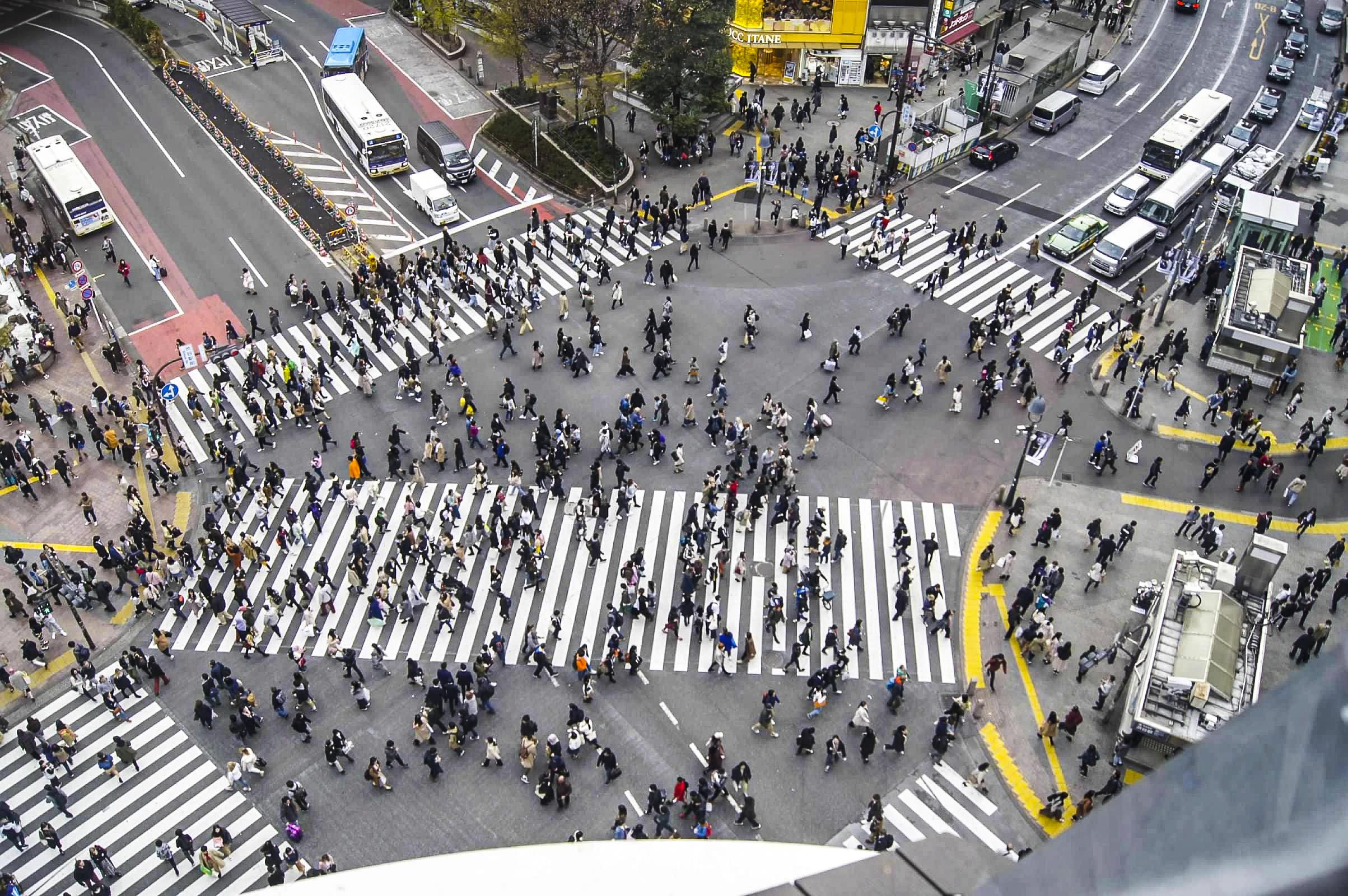
If you are ever visiting Japan, then there is a large chance that you’ll find yourself in Tokyo sometime during your visit. Tokyo, the capital of Japan, is split into twenty-three wards which are then split into districts. One of which is known as the Shibuya (渋谷) district. Shibuya is a well-known shopping area in Tokyo, which I was lucky enough to experience during a visit to Japan. It is a major business and commercial center and houses two of the busiest railway crossings in Tokyo. However, as shopping isn’t my cup of tea, I found myself enjoying the many other attractions in the district much more.
One of the most well-known attractions would be the famous Shibuya Crossing. This crossing is located in front of the Hachikō exit in front of Shibuya station. Rumored to be the busiest intersection in the world, it is well known for stopping all vehicles and allowing pedestrians to freely cross in all directions across the intersection. If you decide to try and cross like I did, you’ll find yourself squeezing and dodging people as you make your way through a crowd of up to 3,000 during peak hours.
The size of the crowds depends on the time and day of the week. Fridays and Saturday evenings have the biggest crowds as people leave the station in droves. The crowd also ebb and flows in accordance with the subway trains and after the last subway train leaves for the night, the crossing is seemingly empty.
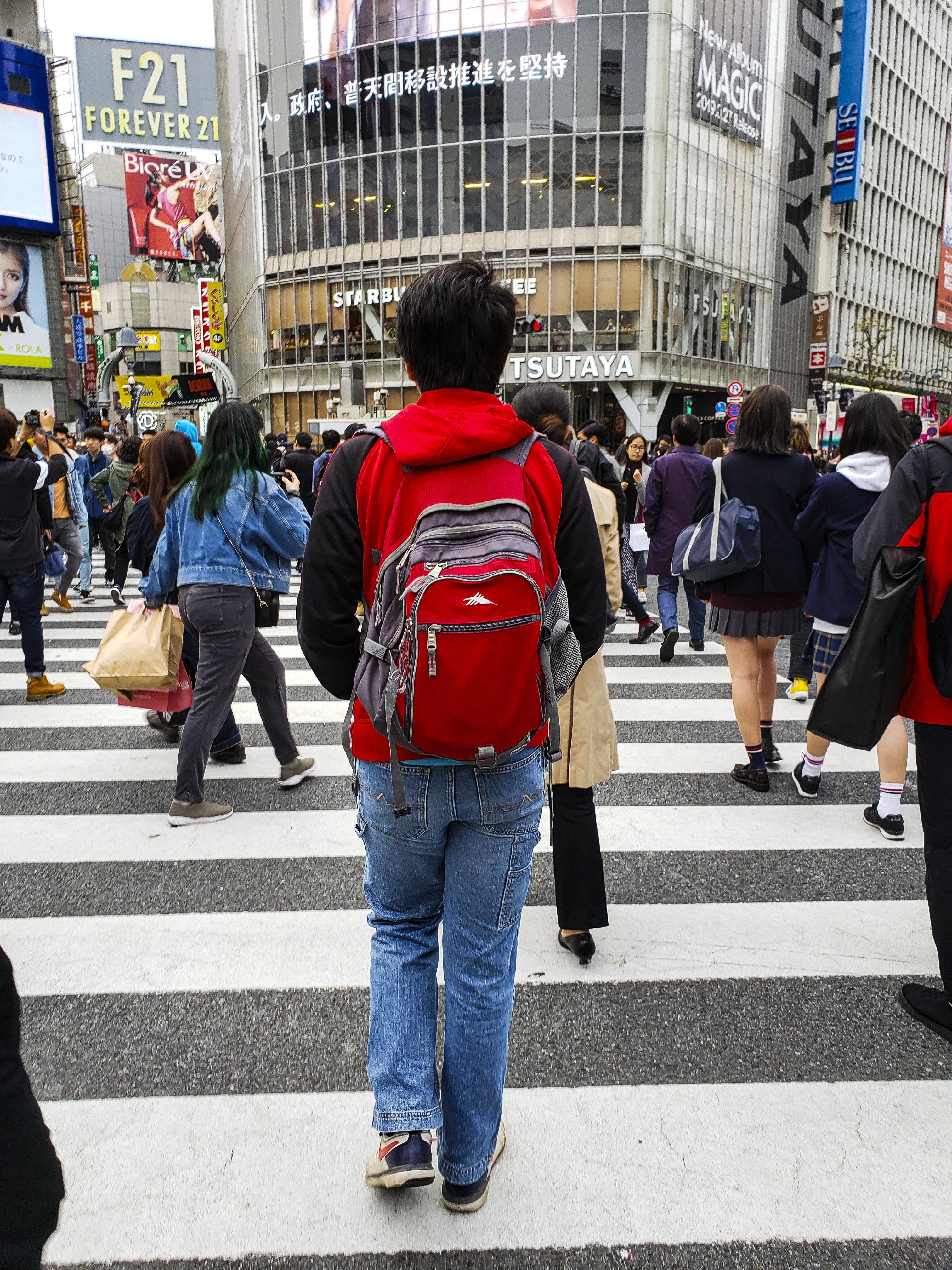
If you would rather not squeeze through the crowd, however, you can get a birds-eye view of the crossing through a nearby building. Mag’s Park is the name of the roof of the department store that you can climb to the top of to take photos and watch as people cross.
Another popular location in Shibuya that I had the chance to visit was Yoyogi Park. Yoyogi Park is the former site of the 1964 Olympics and is a more serene location in the middle of the hectic city. The park has a peaceful atmosphere, making it the perfect place for a small picnic or a nice stroll. You might also find some street performers during your stroll through the park. I was able to catch the end of one of the acts during my visit and was pleasantly surprised at the amount of talent the performers possessed. The performers put on a comedy act where they would try and impress the audience by performing some magic trick or cool flip in some way. However, they would spectacularly fail and then hilariously blame each other or pretend to act hurt at an audience member who is laughing away at their expense. The most amazing part is that the actors did all of this without words! This made it so much easier for my group to understand the skit as we were not able to speak much Japanese.
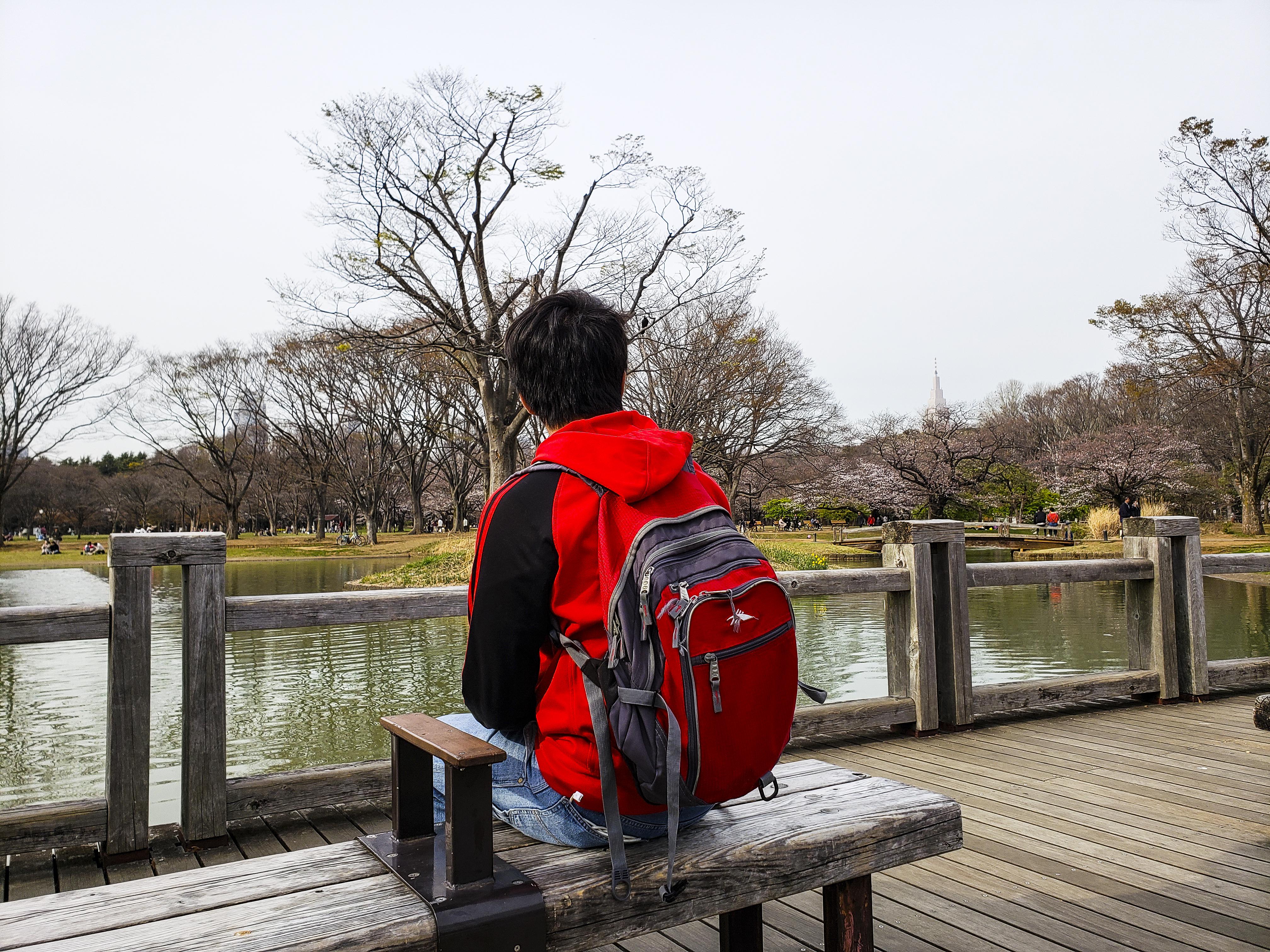
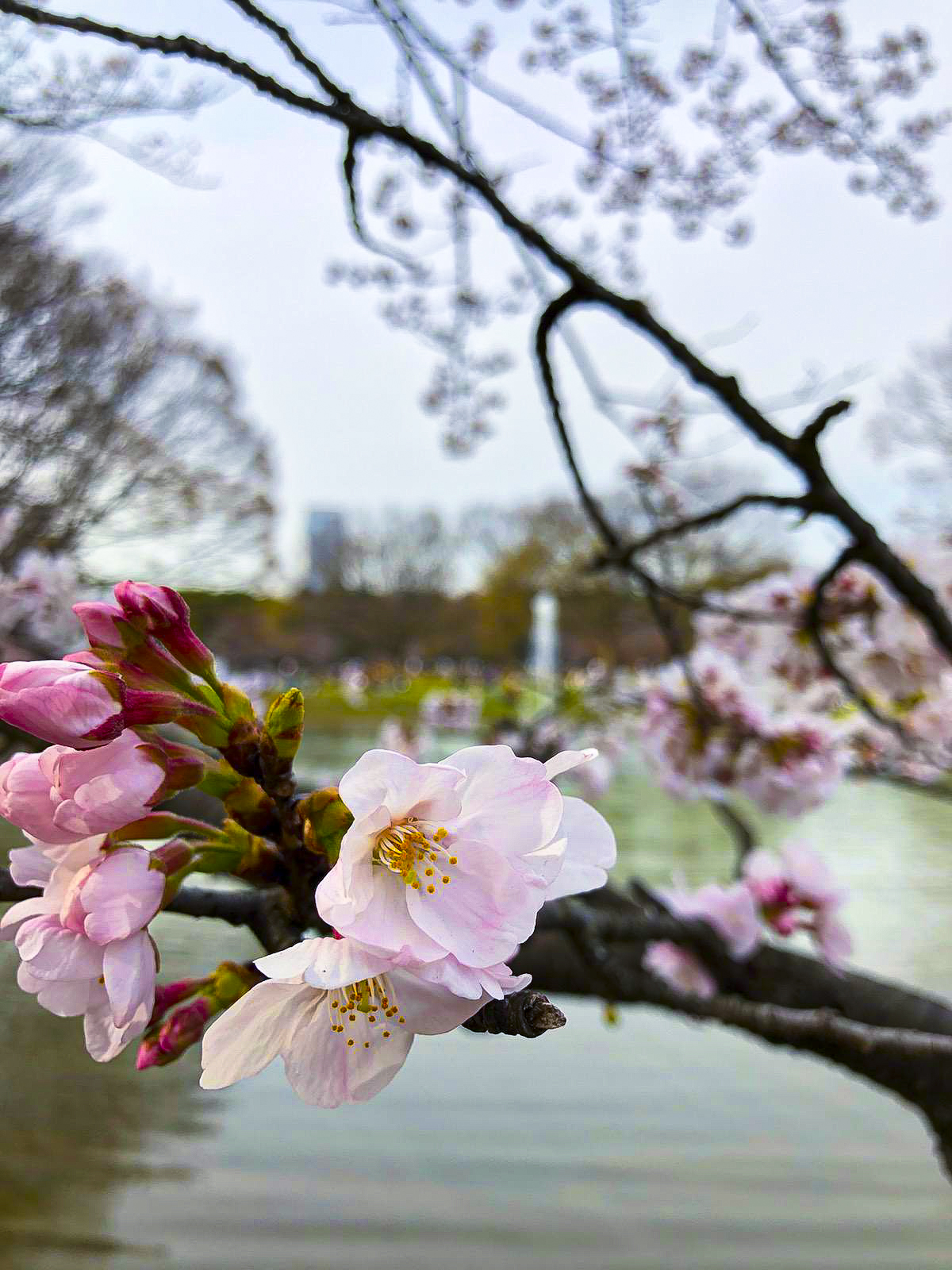
As mentioned earlier, one of the final locations that I was able to visit during my visit to Shibuya was the Meiji Jingu Shrine. Shinto shrines are a staple in Japan, and this shrine was one of my first ones during my visit. This shrine was actually finished in 1920, and is dedicated to Emperor Meiji and Empress Shoken who ascended the throne at the height of the Meiji Restoration, a period when Japan started to westernize more and began their own industrial revolution. Located in the middle of a forest, the shrine is a very popular place on New Years when many locals flock to it. As in Japan, it is a tradition for many people to visit Shrines with family and friends at midnight in order to bring in the New Year.
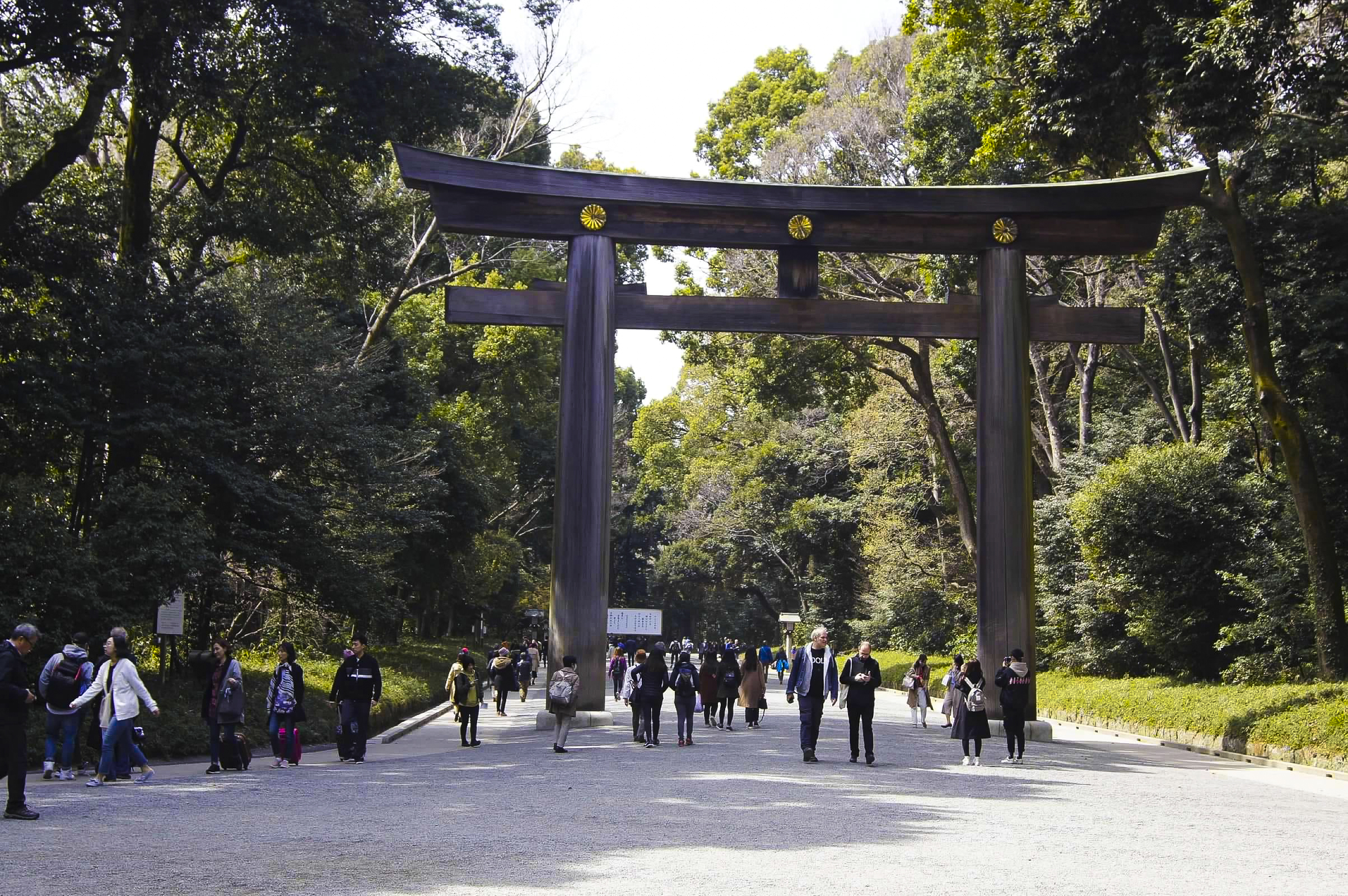
Entrance to the Meiji Shrine
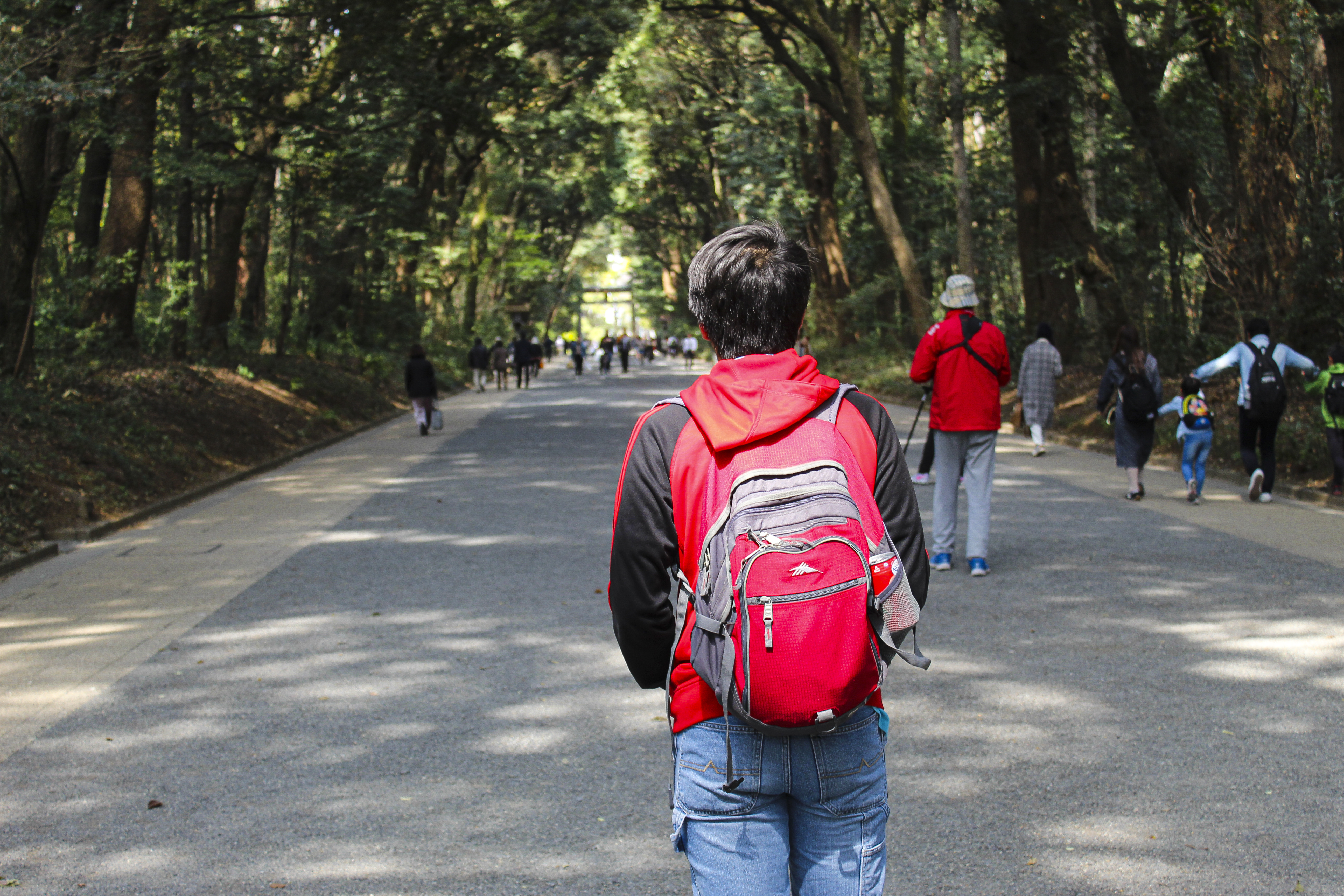
The north entrance to the shrine lies near Yoyogi park and is only a 10 minute walk from Harajuku Station. On the way to the shrine, you may pass by a row of sake barrels. These decorative sake barrels are dedicated to the gods and are donated to the shrine from various breweries in Japan.
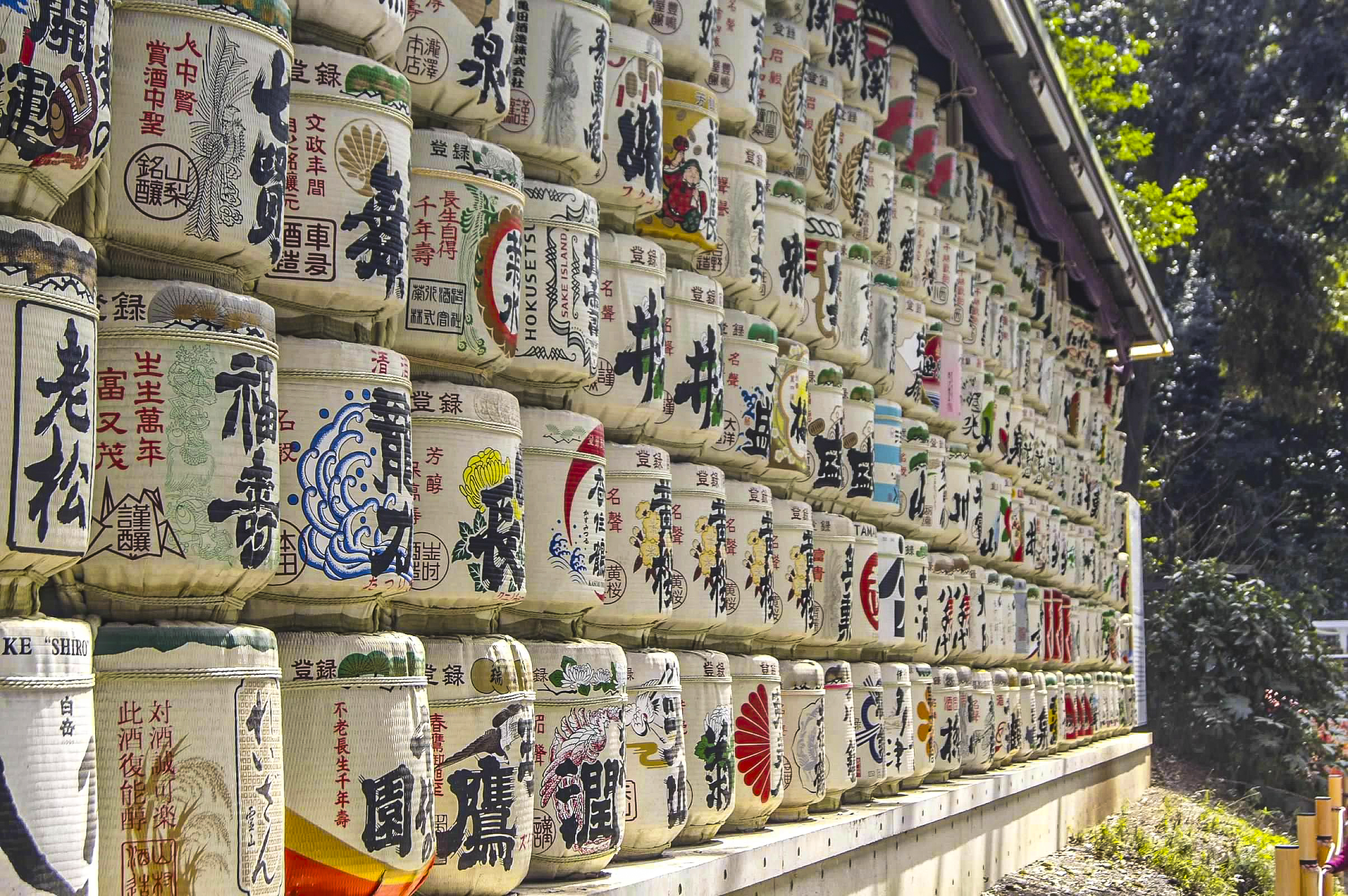
Row of Sake Barrels
The shrine is a location where many rituals take place for locals. I was able to witness a couple during my visit to the shrine. Although I wasn’t able to figure out the exact name of the ritual, I was told that the ceremony is similar to baptism in the Christian religion in which a person is cleared of sins and impurities. Once you are in the shrine area, you can give an offering of usually 5 yen to Shinto deities. The process for the offering is to walk up to the offering box and then bowing slightly. You then toss your offering into the box then bow again twice (more deeply this time). Afterwards, you clap your hands twice and pay your respects before bowing deeply once more and then leaving.
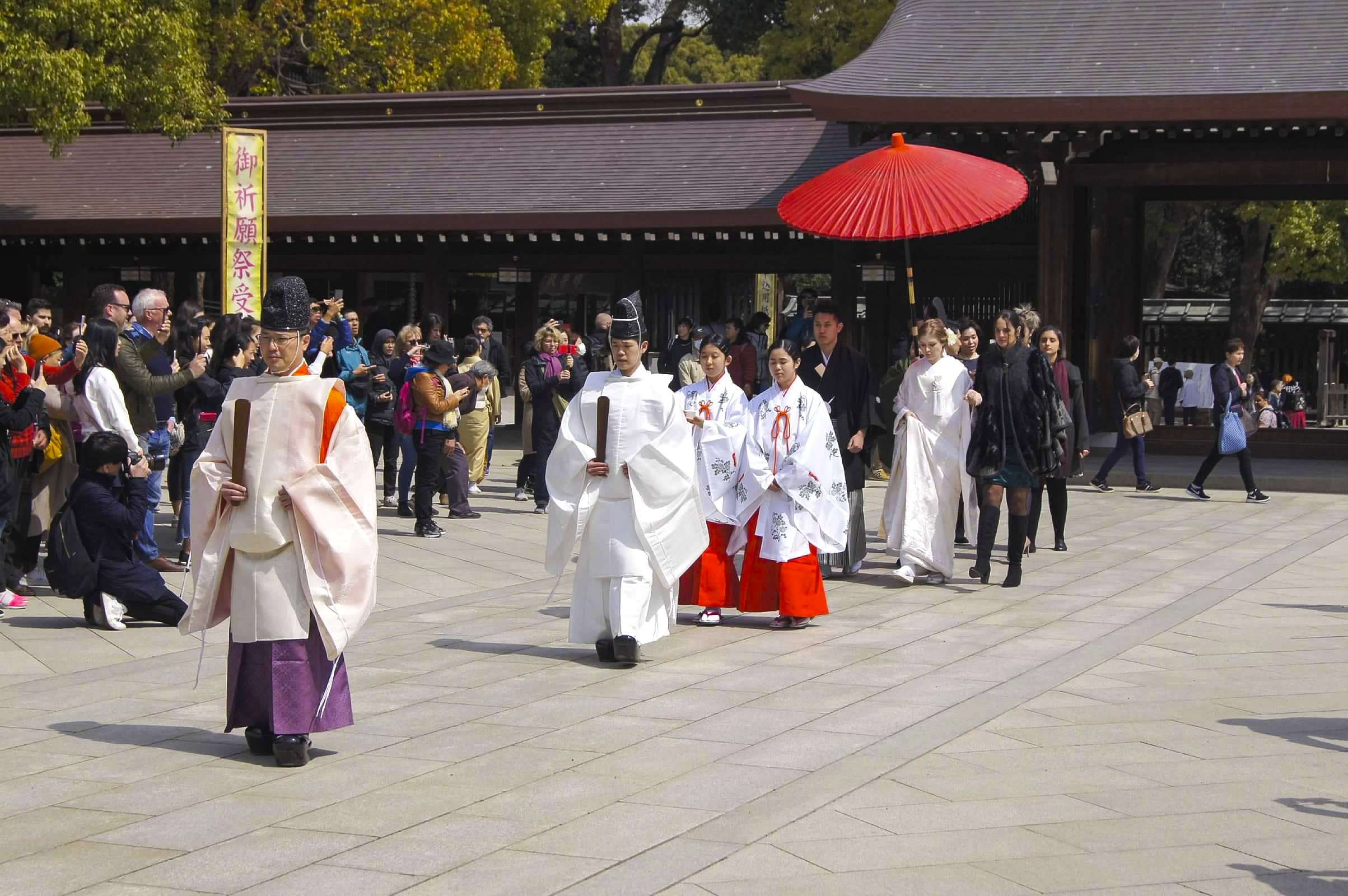
Rituals also take place for foreigners at this shrine too. I was incredibly lucky during my visit to the shrine as it was at the same time as one of these rituals. I was able to watch a ritual for Malala Yousafzai, an activist from Pakistan, who was present for the Japan summit during the same week that I explored the country. While again, I am not sure about the specifics of the ritual, I believe that it was a simple ritual blessing her with luck.
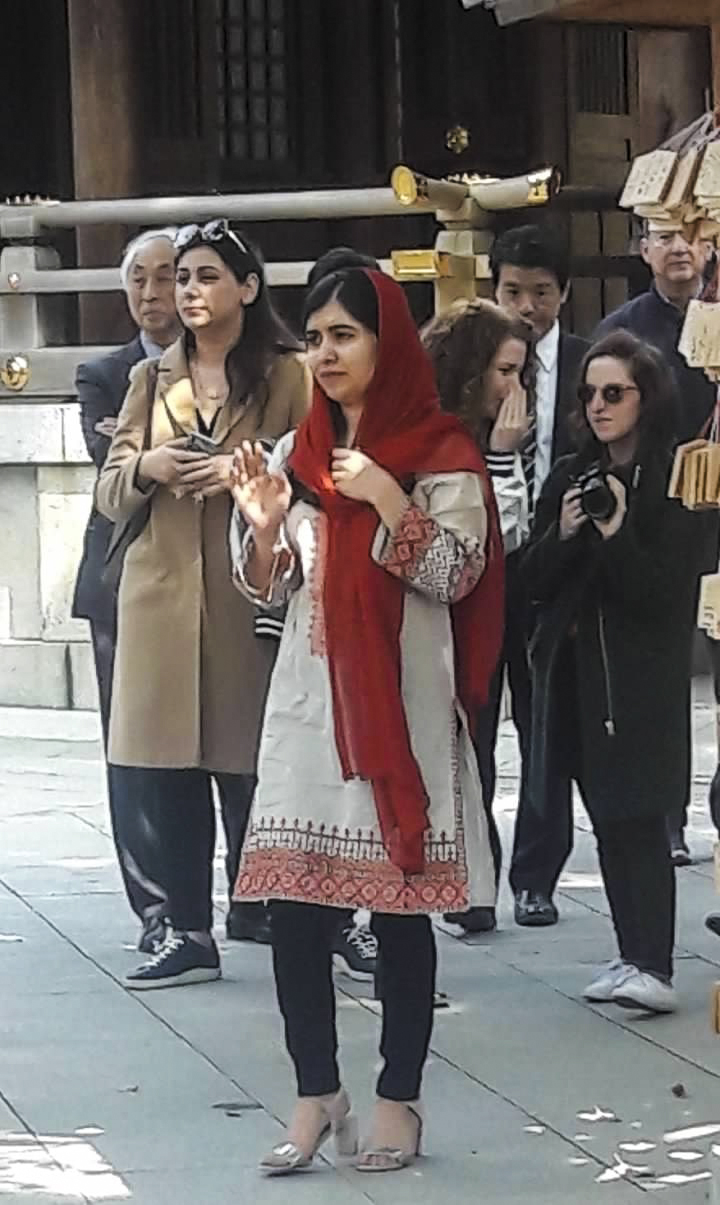
Malala going through the ritual
The shrine itself is a very beautiful area. It has an open courtyard leading to the areas where you can pray to the Shinto gods. You can also get a fortune from this shrine that will tell how much luck you will have in the future. Fortunes are given overall on the top ranging from really bad luck, to great luck. They are then separated into sections such as career, love, studies, etc. However, if you get a fortune with bad luck, then there is no need to worry. It is a tradition in Japan to tie it on a nearby tree which would dispel that fortune. Alongside fortunes, you can also purchase charms at these shrines. These charms can range from ¥500-¥2500 (Roughly $5-$25) and are believed to provide luck in a wide variety of things. These could be love, studies, health, a wish and many more!
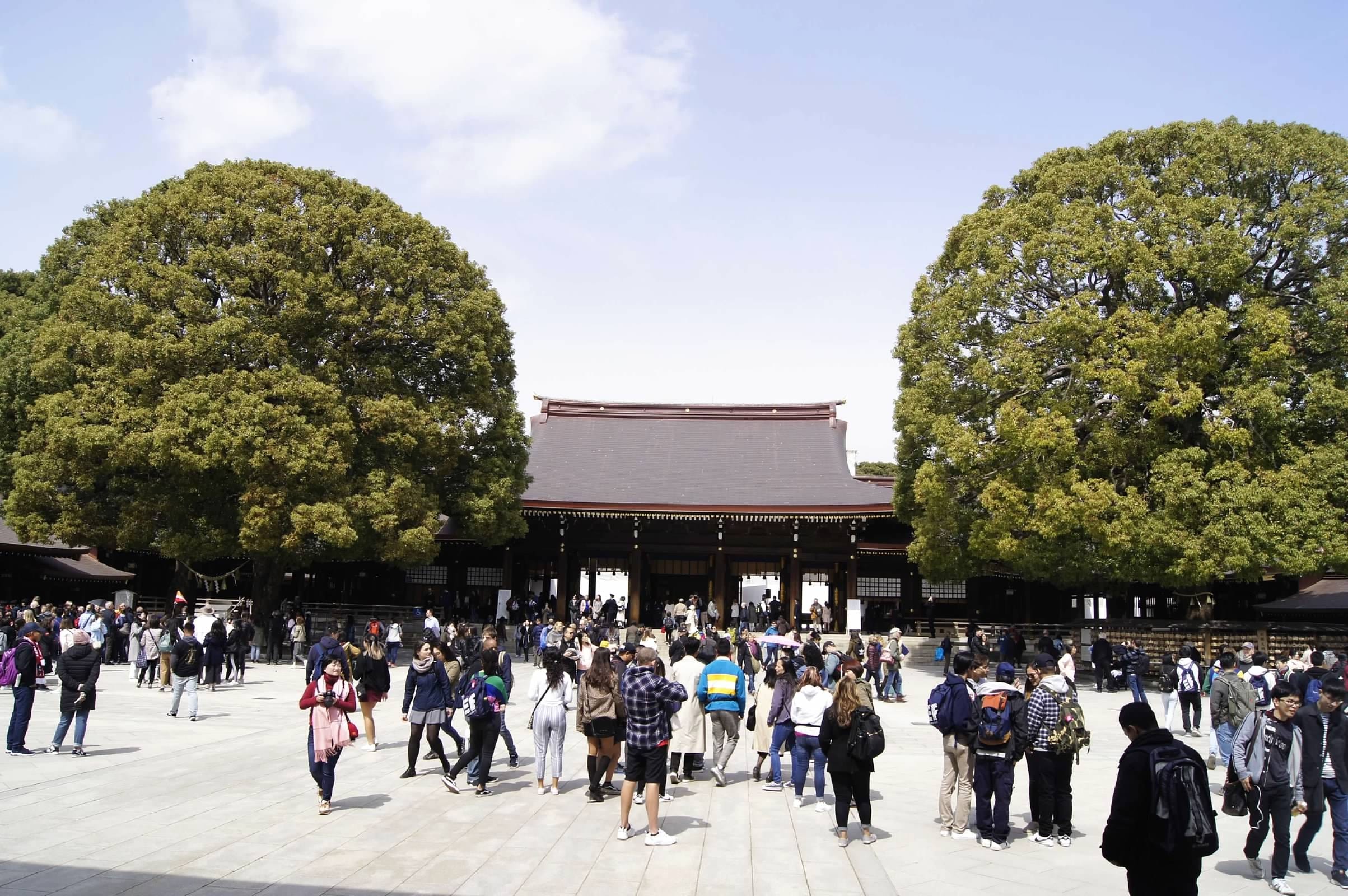
The Meiji Shrine
Finally, for dinner, I decided to go and try a Japanese staple and went to a conveyor belt sushi restaurant. The sushi was delicious and the experience was much different from one that you might find in America. However, it was a little bit pricey as they charge you for each plate that you take-off of the belt. The price of each plate range from ¥200-¥850 a plate (About $2-$8.50). It was a worthwhile first try, but if you would rather something cheaper, there are many other cafes in the area.
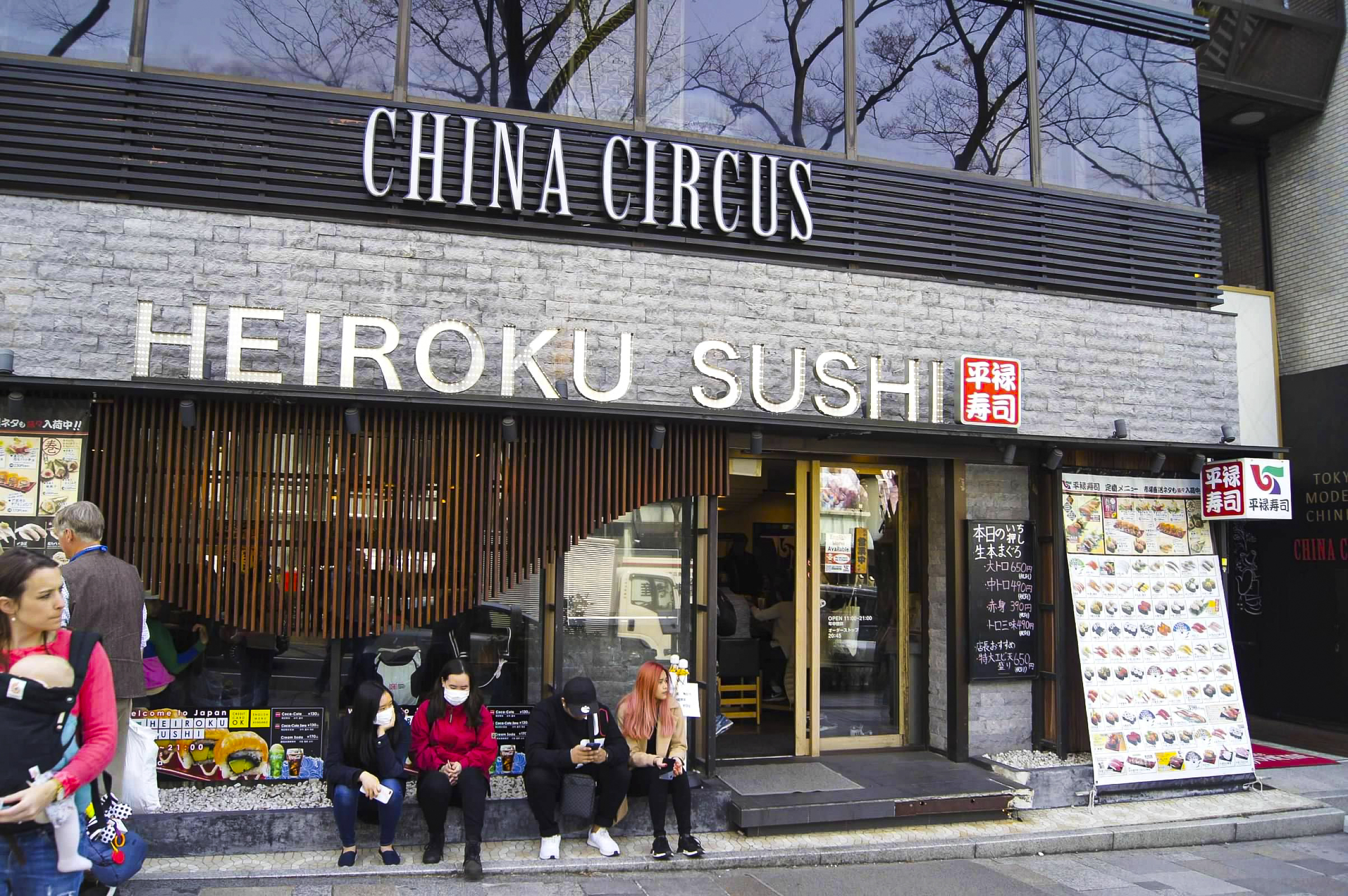
The Rotating Sushi bar
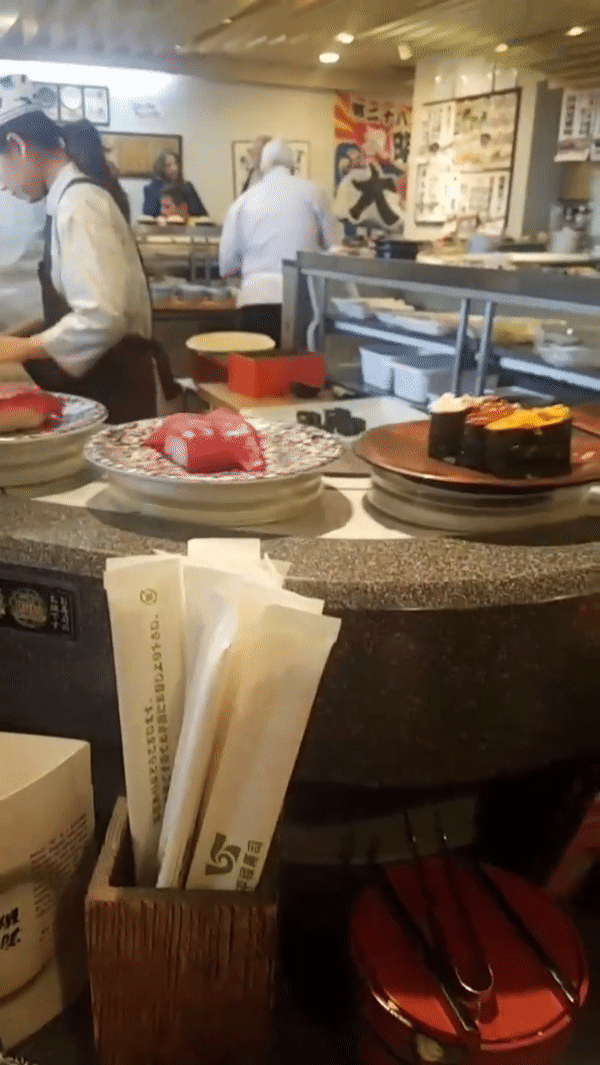
My trip to Shibuya was incredibly memorable with many attractions that I was able to visit. However, as I only spent one day in the district I was only able to visit the main attractions and was unable to look for activities that the locals all do. I will definitely revisit this district sometime in the future with more knowledge of what it has to offer. But for now I can definitely say that Shibuya is an amazing location and one that you should consider adding to your travel plans if you are ever in Tokyo.
Sources for background info and specifics:
Wojnowski, T. (2018, November 8). Shibuya Crossing - Shibuya, Tokyo. Retrieved October 9, 2019, from https://en.japantravel.com/tokyo/shibuya-crossing/3016.
Yoyogi Koen - Spacious city park in Shibuya. (2019, June 3). Retrieved October 9, 2019, from https://www.japan-guide.com/e/e3034_002.html.
Shibuya Crossing: Tokyo, Japan Attractions. (n.d.). Retrieved October 9, 2019, from https://www.lonelyplanet.com/japan/tokyo/attractions/shibuya-crossing/a/poi-sig/396831/356817.
Yoyogi Park. (n.d.). Retrieved October 9, 2019, from https://www.japanvisitor.com/japan-parks-gardens/yoyogi-koen.
CONTACT
Questions or requests? Drop us a message!
Phone: N/A
Email: AoiChikyuuTravel@gmail.com
